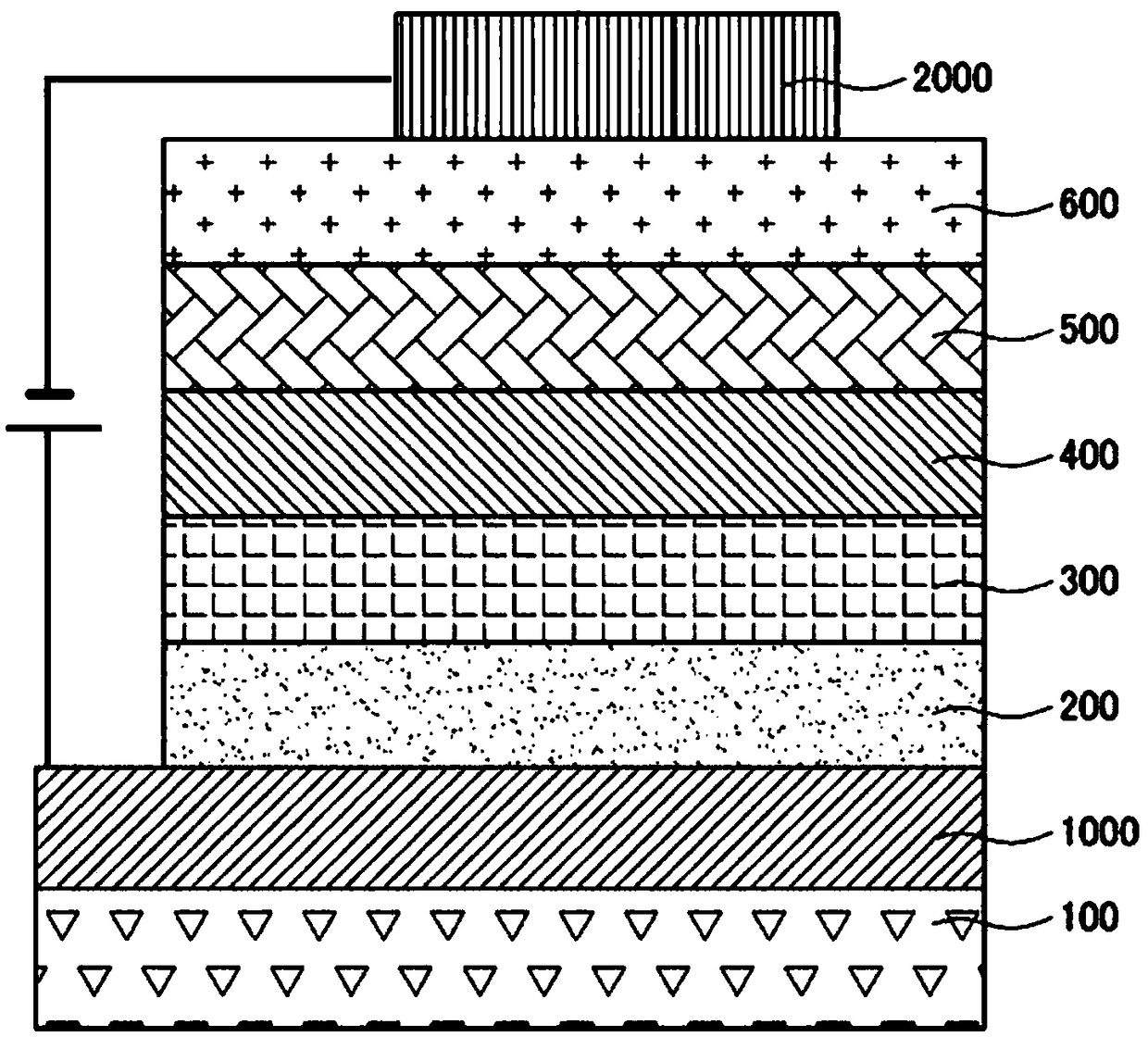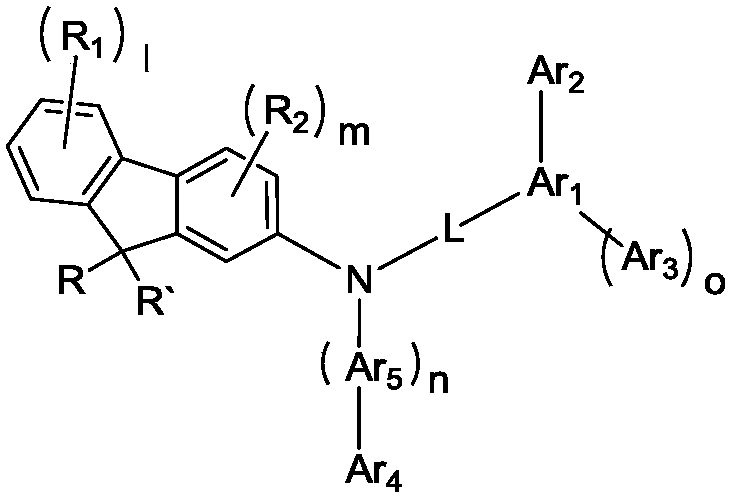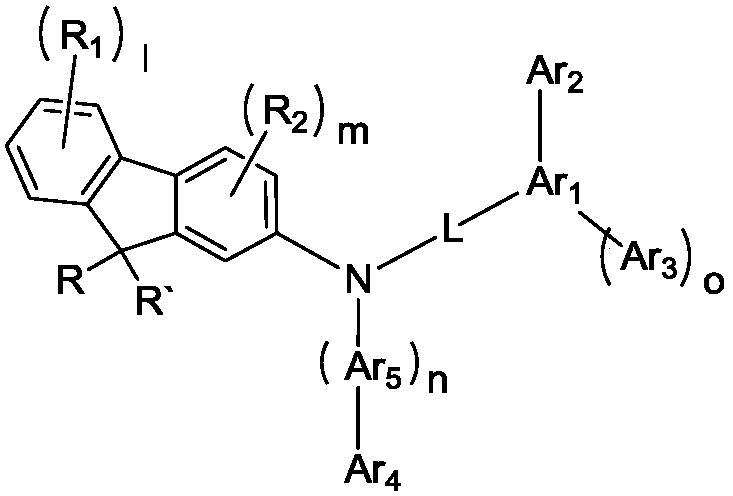Novel compound and organic electroluminescent device including the same
A compound and chemical formula technology, applied in the field of novel compounds and organic light-emitting devices containing them, can solve the problems of high driving voltage, low efficiency, short life, etc., and achieve the effects of high color purity, high efficiency, and high luminous efficiency
- Summary
- Abstract
- Description
- Claims
- Application Information
AI Technical Summary
Problems solved by technology
Method used
Image
Examples
preparation example 1
[0139] The synthesis of preparation example 1.IM
[0140]
[0141] In order to synthesize the target compound, the synthesis is carried out through the above-mentioned steps to prepare IM.
[0142] The synthesis method of the following IM1 is as follows.
[0143]
[0144] In a round bottom flask, 48.5 g of [1,1':3',1"-tetraphenyl]-5'-ylboronic acid, 50.0 g of 1-bromo-4-iodobenzene were dissolved in 1000 ml of 1, 4-dioxane, and put into 265ml of K 2 CO 3 (2M) and 6.1g of Pd(PPh 3 ) 4 Thereafter, the mixture was stirred under reflux. The reaction was confirmed by thin layer chromatography (TLC), and after adding water, the reaction was terminated. The organic layer was extracted with methylcellulose (MC), filtered under reduced pressure, and recrystallized to obtain 50.4 g (yield 74%) of intermediate IM1.
[0145] The following IM2 to IM9 were synthesized by changing the starting materials in the same manner as above IM1.
[0146]
[0147]
preparation example 2
[0148] Synthesis of Preparation Example 2.OP
[0149] The following synthesis method of OP1 is as follows.
[0150]
[0151] In a round bottom flask, 15.0 g of the above 2-bromo-9,9-dimethyl-9H-fluorene, 5.6 g of aniline, 7.9 g of t-BuONa, 2.0 g of Pd 2 (dba)3 , 2.5ml of (t-Bu) 3 After P was dissolved in 200 ml of toluene, it was stirred under reflux. The reaction was confirmed by thin layer chromatography (TLC), and after adding water, the reaction was terminated. The organic layer was extracted with methylcellulose (MC), filtered under reduced pressure, and then recrystallized to obtain 11.75 g (yield 75%) of OP1.
[0152] The following OP2 to OP12 were synthesized by changing the starting materials in the same manner as above OP1.
[0153]
[0154]
Synthetic example 1
[0155] Synthesis Example 1. Synthesis of Compound 1
[0156]
[0157] In a round bottom flask, 3.0 g of IM1, 2.8 g of OP2, 1.1 g of t-BuONa, 0.3 g of Pd 2 (dba) 3 , 0.3ml of (t-Bu) 3 After P was dissolved in 90 ml of toluene, it was stirred under reflux. The reaction was confirmed by thin layer chromatography (TLC), and after adding water, the reaction was terminated. The organic layer was extracted with methylcellulose (MC), and filtered under reduced pressure, followed by column purification and recrystallization to obtain 3.37 g (yield 65%) of Compound 1.
[0158] m / z: 665.31 (100.0%), 666.31 (56.0%), 667.31 (15.1%), 668.32 (2.7%)
PUM
 Login to View More
Login to View More Abstract
Description
Claims
Application Information
 Login to View More
Login to View More - R&D Engineer
- R&D Manager
- IP Professional
- Industry Leading Data Capabilities
- Powerful AI technology
- Patent DNA Extraction
Browse by: Latest US Patents, China's latest patents, Technical Efficacy Thesaurus, Application Domain, Technology Topic, Popular Technical Reports.
© 2024 PatSnap. All rights reserved.Legal|Privacy policy|Modern Slavery Act Transparency Statement|Sitemap|About US| Contact US: help@patsnap.com










